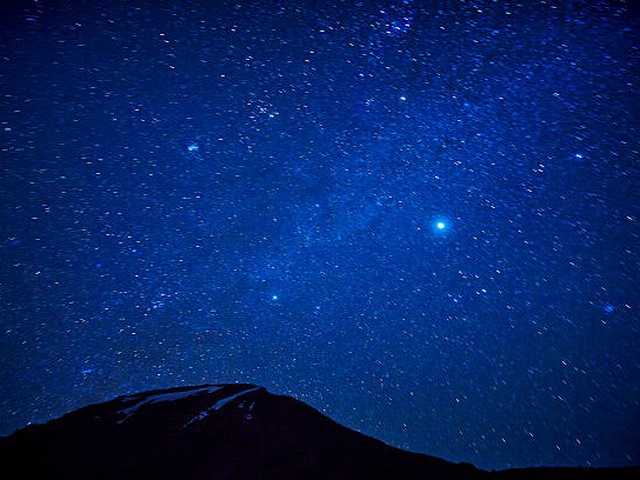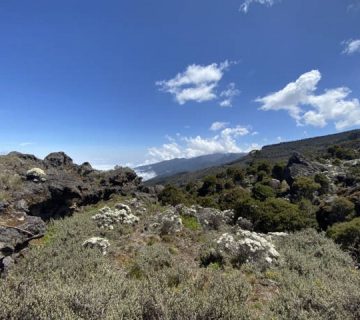Essential Travel Gear for Kilimanjaro Trek: Your Ultimate Guide to Conquering the Roof of Africa
Introduction: Why the Right Gear Matters
Standing majestically as the highest peak in Africa, Mount Kilimanjaro is not just a mountain; it’s a beacon for adventurers worldwide. Embarking on this trek is not merely a walk on a trail; it’s a journey through varying climates and terrains, each presenting unique challenges and breathtaking beauty. At the Kilimanjaro Centre for Trekking and Ecotourism (KCTE), we understand that the key to conquering this majestic mountain lies not only in your spirit of adventure but also in your preparation, especially when it comes to choosing the right gear. In this blog, we’ll dive deep into the essential travel gear for your Kilimanjaro trek, ensuring you’re well-equipped to face the Roof of Africa with confidence and safety.
Harnessing Your Kilimanjaro Kit: The Essentials
Clothing: Layering Up for Diverse Climates
Mount Kilimanjaro’s weather is as varied as its trails. From tropical heat to freezing temperatures, your clothing needs to handle these extremes seamlessly.
Base Layer:
Start with moisture-wicking materials like merino wool or synthetic fabrics that keep you dry and comfortable.
Insulation Layer:
A fleece or down jacket will be your best friend in the colder zones.
Outer Layer:
A waterproof and windproof jacket is crucial, as weather conditions can change rapidly.
Footwear: A Step in the Right Direction
The importance of reliable, sturdy footwear cannot be overstated on Kilimanjaro’s rocky paths.
Hiking Boots:
Choose waterproof, ankle-supporting boots for stability and protection.
Trainers or Sandals:
For lounging around the camp after a day’s hike.
Thermal Socks:
Several pairs to ensure warmth and rotation for freshness.
Headgear and Handwear: Protecting the Extremities
Hat and Beanie:
A brimmed hat for the sun and a warm beanie for cold nights.
Gloves:
Waterproof and insulated gloves are necessary to combat frostbite during the summit push.
Gear Up: Technical Equipment and Accessories
The Backpack: Your Trekking Companion
A durable, fit-for-purpose backpack (30-40 liters capacity) with comfortable straps and enough compartments is essential for carrying your personal items and hydration packs.
Hydration and Nutrition: Fueling the Ascent
Water Bottles or Hydration Systems:
Staying hydrated is crucial; aim for 3-4 liters of water per day.
Energy Snacks:
Pack energy bars, nuts, and dried fruits to keep your energy levels up.
Navigational Tools: Stay on the Right Path
Although you will be accompanied by experienced guides from KCTE, a personal GPS device or a compass can be handy in emergency situations.
Health and Safety: Ensuring a Smooth Journey
First Aid Kit: A Must-Have Safety Gear
Include altitude sickness medication, plasters, antiseptic wipes, and blister patches.
Sun Protection: Shield Yourself
The UV rays at high altitudes are notably fierce, making sunscreen, sunglasses, and lip balm indispensable.
Sleeping Gear: Restful Nights for Energetic Mornings
Sleeping Bag:
Opt for a four-season sleeping bag that can handle temperatures as low as -10 degrees Celsius.
Insulating Mat:
An insulating sleeping mat will cushion you from the cold ground.
Keeping it Light: Packing Smart
While it’s essential to be well-prepared, overpacking can hinder your agility and stamina. Pack smart by choosing gear that is versatile, lightweight, and essential for your safety and comfort.
Connect with Nature Responsibly: Eco-Friendly Practices
At KCTE, we advocate for sustainable tourism. Opt for biodegradable and eco-friendly products where possible and ensure that you leave no trace on the majestic Kilimanjaro.
Why Choose Kilimanjaro Centre for Trekking and Ecotourism (KCTE)?
With years of experience and a deep commitment to both our clients and the environment, KCTE offers expertly guided tours that promise not only adventure but also safety and environmental integrity. Our local guides are your doorway to not just conquering Kilimanjaro but also understanding this spectacular landscape’s deeper cultural and ecological significance.
Conclusion: Ready to Conquer Kilimanjaro?
Equipped with the essential travel gear, you’re nearly ready to take on the challenge of Mount Kilimanjaro. Remember, the right gear can make the difference between a good and a great adventure. Check your gear list, prepare your mind and body, and join us at Kilimanjaro Centre for Trekking and Ecotourism (KCTE) for the trek of a lifetime.
FAQs: Prepare to Succeed
Q1: How important is it to break in my hiking boots before the trek?
Absolutely essential! Ensure you have several weeks to adapt to your boots before the trek to prevent blisters and discomfort.
Q2: Can I rent some equipment locally?
Yes, KCTE offers rental options for major gear items like sleeping bags and insulated mats, although personal gear like clothing and boots should be personally fitted.
Q3: What is the best time of year to climb Kilimanjaro?
The best climbing seasons are from June to October and from December to March, when the weather is most favorable.
Q4: How do I deal with altitude sickness?
Acclimatization is key. Make sure to follow a guided itinerary that allows your body to adjust gradually, and always keep altitude sickness medication handy.
Ready to gear up and start your adventure? Contact Kilimanjaro Centre for Trekking and Ecotourism (KCTE) today, and let’s make your dream of conquering Kilimanjaro a reality!




